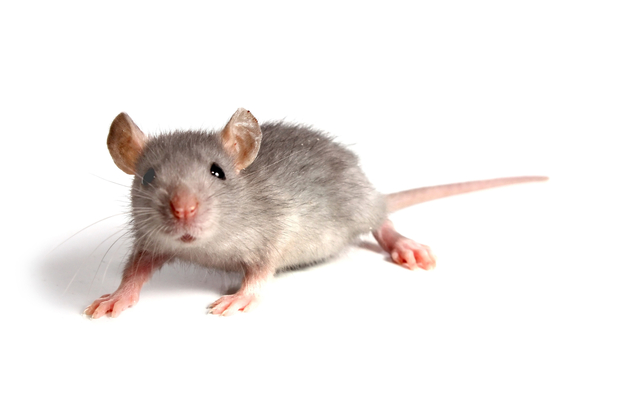
J & L Pest Control is a family owed business that has been practicing Integrated Pest Management (IPM) services since it was founded.
T (631)-605-9919
Email: jandlpestcontrol@gmail.com
J & L Pest Control
1090 Martinstien Ave.
Bay Shore, NY 11706

BIOLOGY. The house mouse is a prolific breeder. They reach sexual maturity in 35 days and mate when 6-10 weeks old. Pregnancy lasts an average of 19 days (range 18- 21). The young are blind and naked except for vibrissae (long whiskers), and are weaned at about 21 days (range 3-4 weeks). The average litter size is 6 (range 5-8), with about 8 litters per year, but averaging 30-35 weaned/female/year. Therefore, a female can have a new litter about once every 40-50 days. More than 1 litter may be present in the nest at one time. Life expectancy is normally less than 1 year, but mice have been known to live as long as 6 years.
Mice have keen senses, except for sight because they cannot see clearly beyond 6" (15 cm) and are color blind.They are excellent climbers and can run up most roughened walls. Mice can swim but prefer not to do so. They can jump 12" (30.5 cm) high and can jump down from about 8 ft (2.5 m) high without injury. Mice can survive and thrive in cold stor¬age facilities at 14°F (*10°C). They can run horizontally along pipes, ropes, and wires. A mouse requires about 1/10 oz (2.8 g) of dry food and 1/20 oz (1.5 ml) of water (normally obtained from food) each day and produces about 50 droppings each day.
Over a 6-month period, a pair of mice will eat about 4 pounds (1.8 kg) of food, . produce about 18,000 droppings, and void about 3/4 pint/12 oz. (355 ml) of urine. The most common way mice transmit disease organisms is by contaminating food with their droppings and/or urine. The most threatening organism spread by mice is Salmonella, a cause of food poisoning, spread via droppings. Other transmittable organisms include tapeworms via droppings, rat-bite fever via bites, infectious jaundice/leptospirosis/Weil’s Disease via urine in food or water, a fungus disease (Favus) of the scalp either by direct contact or indirectly via cats, plague and murine typhus via fleas, Rickettsial pox via the mite
HABITS. Mice are very social. Related males and females are compatible, but unrelated male mice are typically very aggressive toward one another. Social hierarchies with one male dominating lower-ranking males result in the maintenance of territories, which may include a large number of females as well as lower-ranking males, most of which will be related. All mature mice tend to show aggression towards strangers of either sex that enter their territory, which is marked with urine. Territory size varies but it is usually relatively small. If food and shelter are plentiful, they may not travel more than 4-5 feet (1.2-1.5 m) from their nests.
Mice are inquisitive. During the daily territorial patrol, they will explore anything new or changed, and establish new travel routes if needed. Mice are nibblers and eat only small amounts of food at any one time or place. Although mice will eat many kinds of food, seeds and insects are usually preferred. They are opportunistic feeders and should one food dis¬appear, they will readily switch to another food. There are 2 main feeding periods, at dusk and just before dawn, with many other “mini” feeding times in between. They will sample new foods but return to the old food unless the new food is preferred. Required moisture is normally obtained from their food but they will take free water when available, especial¬ly when feeding on high-protein food. When given a choice, they prefer sweetened liquids over plain water.
Their preferred nesting sites are dark, secluded places where there is abundant nesting material nearby and little chance of disturbance. Nesting materials include paper products, cotton, packing materials, wall/attic insulation, fabrics, etc. Mice are nocturnal in habit. They require an opening of greater than 1/4" (6 mm) to gain entry.
In rural and suburban areas, the house mouse lives outdoors in wooded areas, fields, croplands, yards, etc., where they build their nest in vegetative debris, natural cavities, burrows, etc. Here they feed on seeds and insects. Since the house mouse cannot hiber¬nate, in temperate areas they seek shelter as the weather cools and their food sources disappear. Around structures, they follow warm air currents and food odors coming out through door thresholds, utility line entrances, etc. into a suitable site. If the entrance has been marked by previous mice, it’s just that much more attractive. In urban areas, they commonly come in from other structures via utility connections, or from other parts of the same structure. In commercial structures, mice are commonly also brought in with supplies and/or equipment.
CONTROL. The key to any mouse control program is pest identification, sanitation, harborage elimination, and mouse-proofing the building.
Please call us today for a free extimate for the elimination and preventation of mice activity from your premises.
